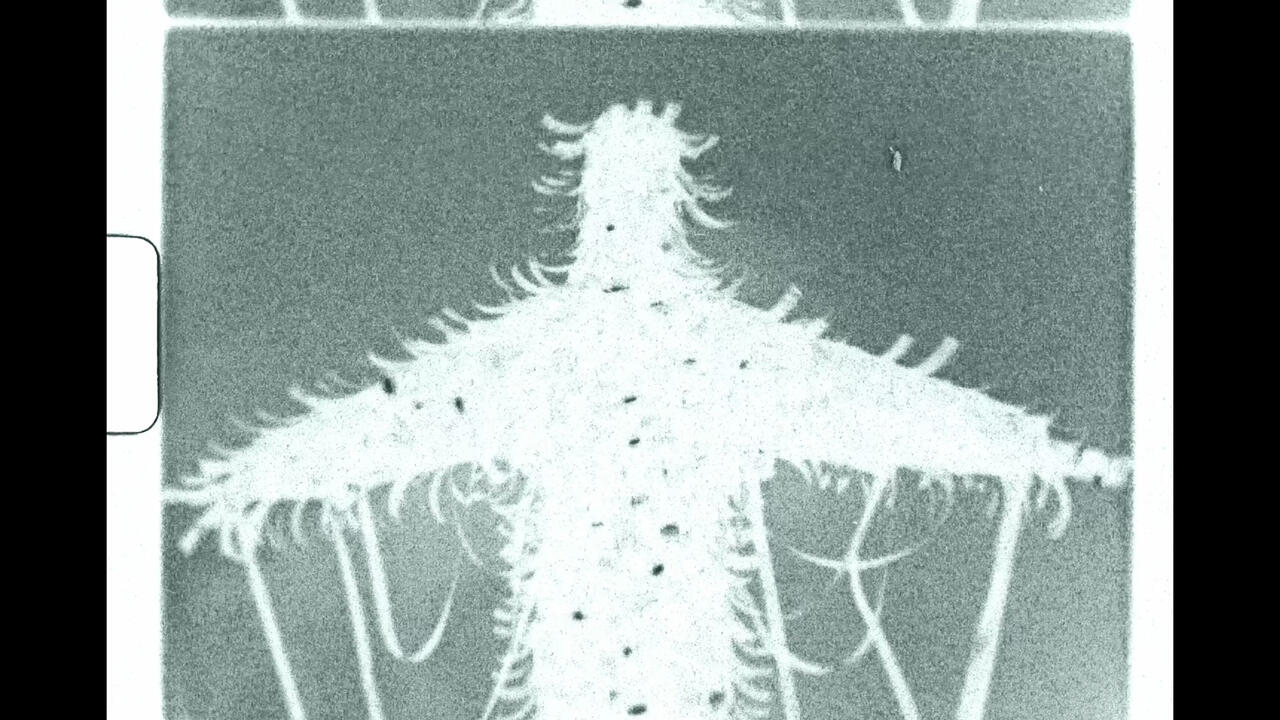Janek Schaefer
The Bluecoat, Liverpool, UK
The Bluecoat, Liverpool, UK

When Janek Schaefer’s Recorded Delivery (1995) was shown in the Artangel-commissioned ‘Self Storage’ exhibition in 1995, the show’s co-curator Brian Eno praised the work’s economical elegance, remarking that he wished he’d thought of it first. ‘Sound Art’, Schaefer’s first retrospective, revealed that, since then, he has produced such moments of deceptive simplicity with envy-inducing regularity.
Recorded Delivery involved Schaefer posting a personal recorder to the exhibition venue, its voice-activated function condensing an overnight journey into a 72-minute sound collage. Between the muffled rumbling of transport and snatches of dirty talk from sorting-office workers, the tape captured its own whirring. Exhibited inside a red Royal Mail satchel, Recorded Delivery relates to many of the themes that Schaefer has since returned to: sound as a record of little-known spaces; the distortions of human memory; and – perhaps most importantly – the fun of leaving things to chance. The work also signals Schaefer’s fondness for puns or, more revealingly, how an apparent literal-mindedness can lead to thought-provoking insights.
There’s more to Schaefer than raising laughs with cute ideas, however. Inner Space Memorial (For J.G. Ballard) (2009) offers a recent echo of Recorded Delivery’s playful literalism, with a speaker whose cones are inverted to face into the cabinet. It’s a much more overtly sombre work, however, conceived as a tribute to the late writer, a near-neighbour of Schaefer’s in Walton-on-Thames, Surrey, whom the artist admired but never met. The speaker plays a drone whose hazy, elegiac swelling is reminiscent of Philip Jeck (a long-time friend and collaborator), yet whose full sonic qualities are forever turned inward, unreachable by the listener.
An unabashed vinyl fan, Schaefer’s love of the rituals and traditions of records, turntables and speakers manifests itself in objects such as the Tri-phonic Turntable (1997). This adapted record player has three arms which can play either in three places on the same record or three different records at once. Produced in response to post-9/11 hand luggage restrictions, the more compact Duel Turntable (2005) has two opposing arms that converge and eventually collide. It’s a shortcoming of ‘Sound Art’ that the gallery format’s focus upon artefacts for display offers little idea of how both are used in Schaefer’s live performances – not as a cheap novelty trick but as versatile tools.
The celebration of supposedly obsolete technology continues in the Bluecoat’s new commission, National Portrait (The Last Transmission) (2009), Schaefer’s epitaph for analogue television. A compilation of sound clips from the last 24 hours of non-digital broadcasts in the Liverpool region (on 1 December last year) play back randomly on five vintage TV sets, their grey screens flickering as a succession of news bulletins, quiz shows and soaps fade in and out. Rejecting the temptation to attack the banality of much modern-day programming, National Portrait … stands as a wistful and nostalgic record of not only the passing of a particular December day in north-west England, but the more general yielding of the analogue world to digital. The fact that this transition overlaps with the first two decades of Schaefer’s career raises questions of where he, too, is headed: what will happen when he can no longer procure those vintage turntables, or the vinyl from which he hand-cuts releases of his work?
It’s likely, however, that Schaefer will prove a more adaptable sonic operator than the slightly narrow view ‘Sound Art’ offers. Vacant Space (2006) suggests one possible future direction: produced in collaboration with Chris Watson and David Tinapple, the work combines sound and video from a range of unpeopled buildings and outdoor locations, ranging from New Zealand’s Waitomo Caves to upmarket London apartments. Three different sets of field recordings are heard simultaneously through earphones, whilst a scrolling video projection brightens and flickers in sync, producing a visually and sonically disconcerting effect. As with Recorded Delivery, Schaefer demonstrates that, in his hands, there’s nothing quite as interesting as what happens when no one appears to be listening.
















